Agnes Scherer
The Notebook Simulations
21 Sep 2021 - 16 Jan 2022

Agnes Scherer, Der Perseidenschauer (2021), installation view Agnes Scherer – The Notebook Simulations, Kunstverein für die Rheinlande und Westfalen, Düsseldorf, 2021, photo: Mareike Tocha

Agnes Scherer, The Notebook Simulations, installation view Kunstverein für die Rheinlande und Westfalen, Düsseldorf, 2021, photo: Mareike Tocha
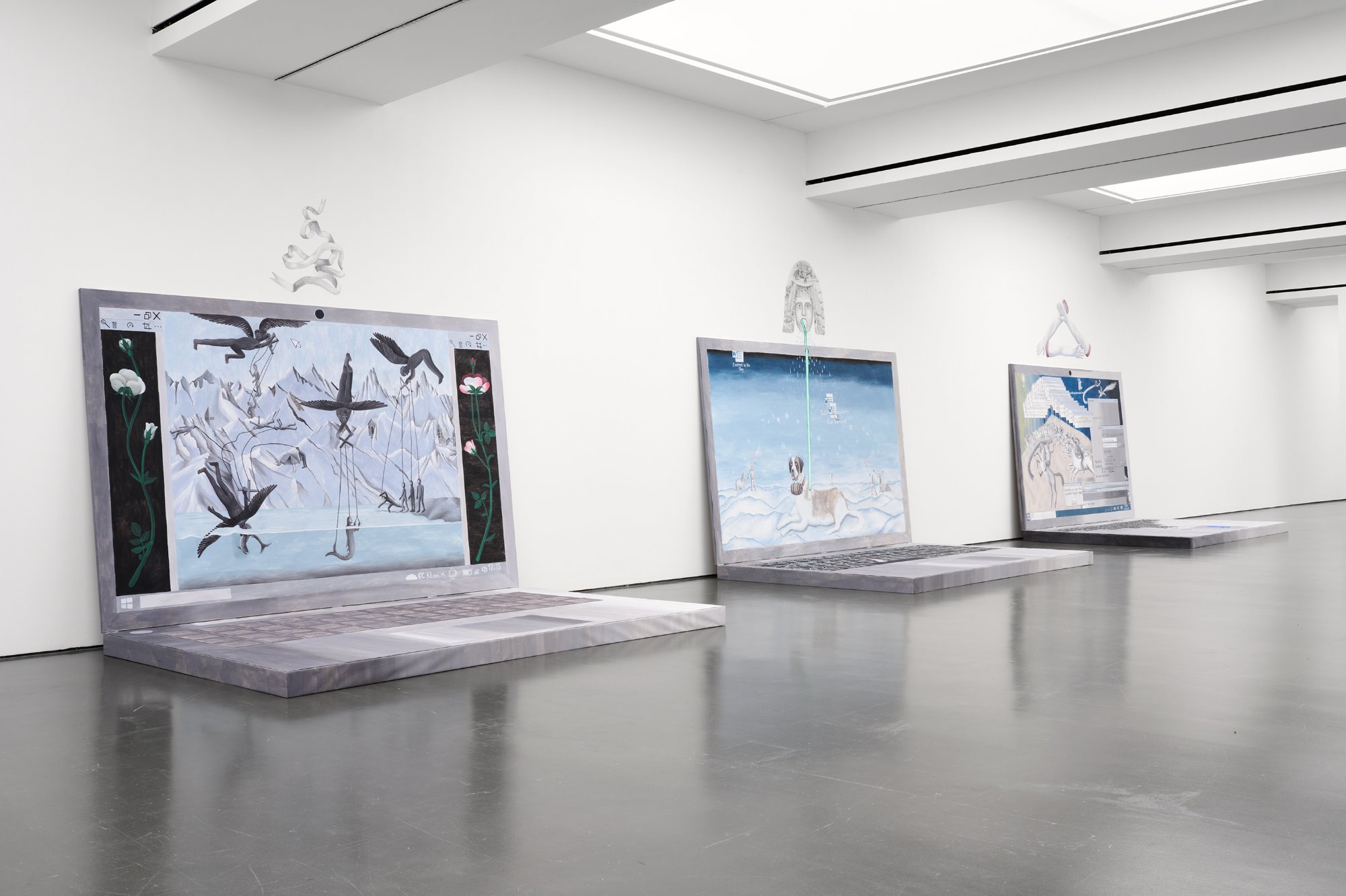
Agnes Scherer, The Notebook Simulations, installation view Kunstverein für die Rheinlande und Westfalen, Düsseldorf, 2021, photo: Mareike Tocha
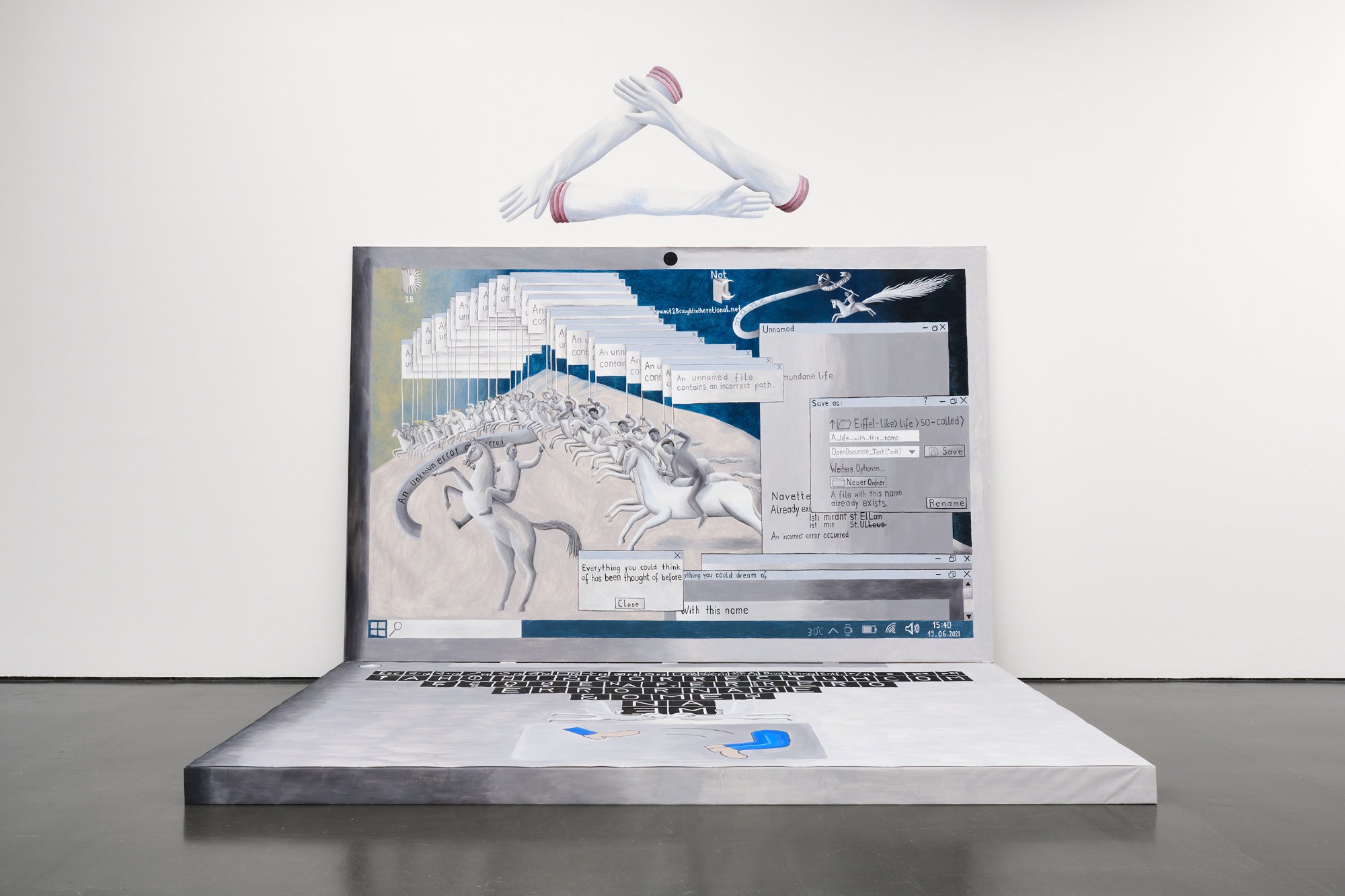
Agnes Scherer, An unnamed file contains an incorrect path, 2021, installation view Agnes Scherer – The Notebook Simulations, Kunstverein für die Rheinlande und Westfalen, Düsseldorf, 2021, photo: Mareike Tocha
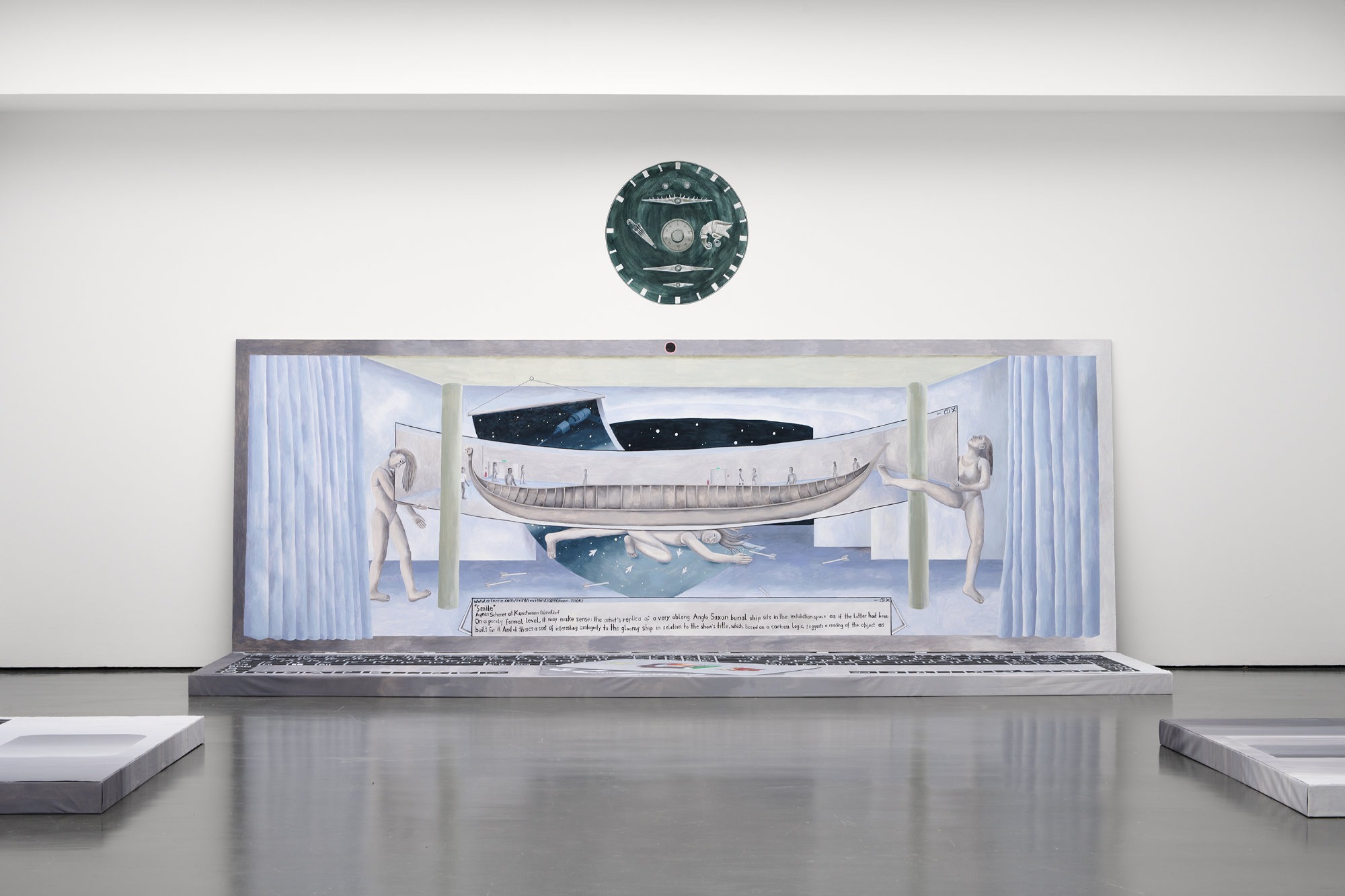
Agnes Scherer, Smile (Les Pleurantes), 2021, installation view Agnes Scherer – The Notebook Simulations, Kunstverein für die Rheinlande und Westfalen, Düsseldorf, 2021, photo: Mareike Tocha
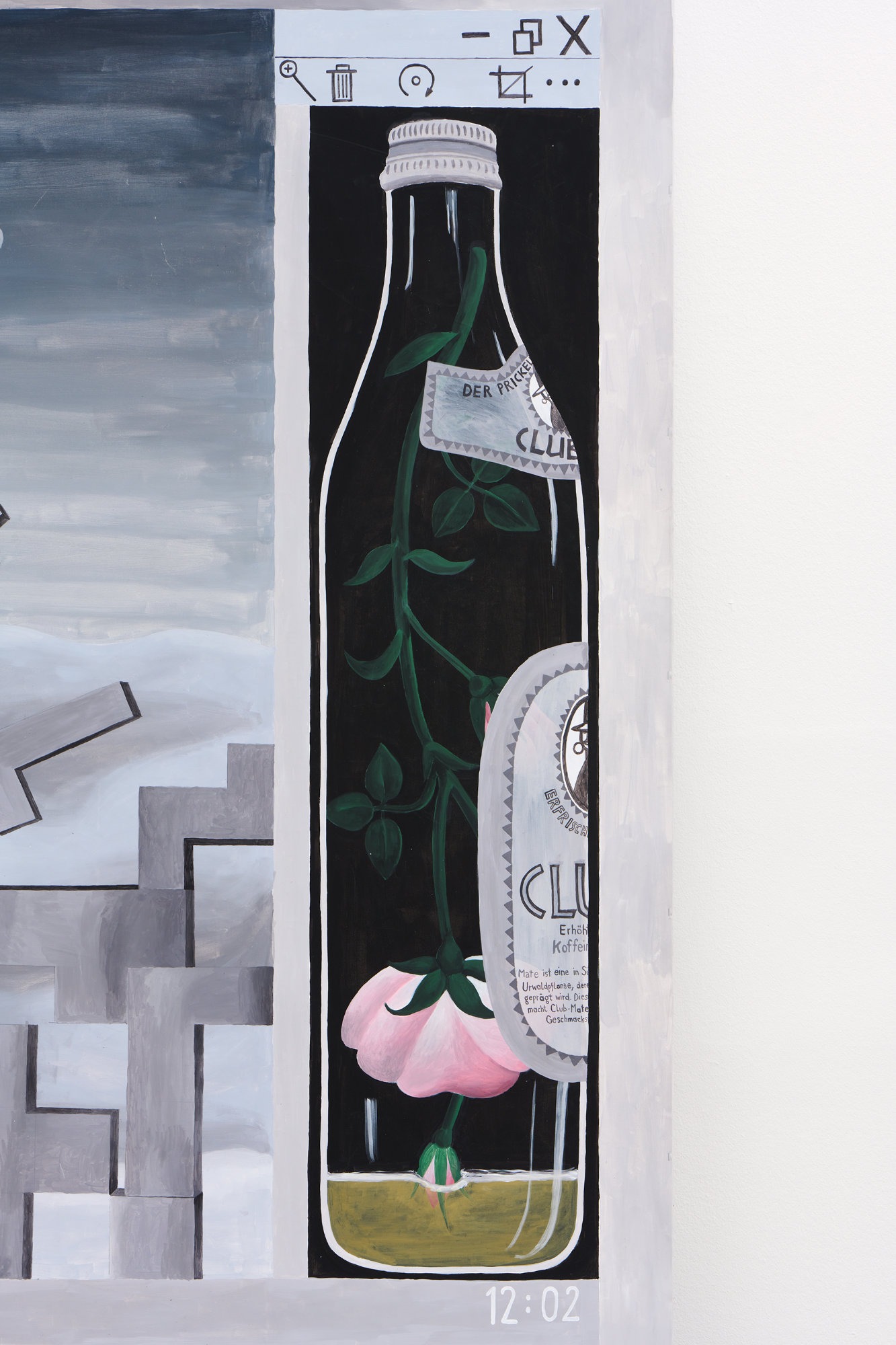
Agnes Scherer, Verhängnisvolle Geschenke (detail), 2021, installation view Agnes Scherer – The Notebook Simulations, Kunstverein für die Rheinlande und Westfalen, Düsseldorf, 2021, photo: Mareike Tocha
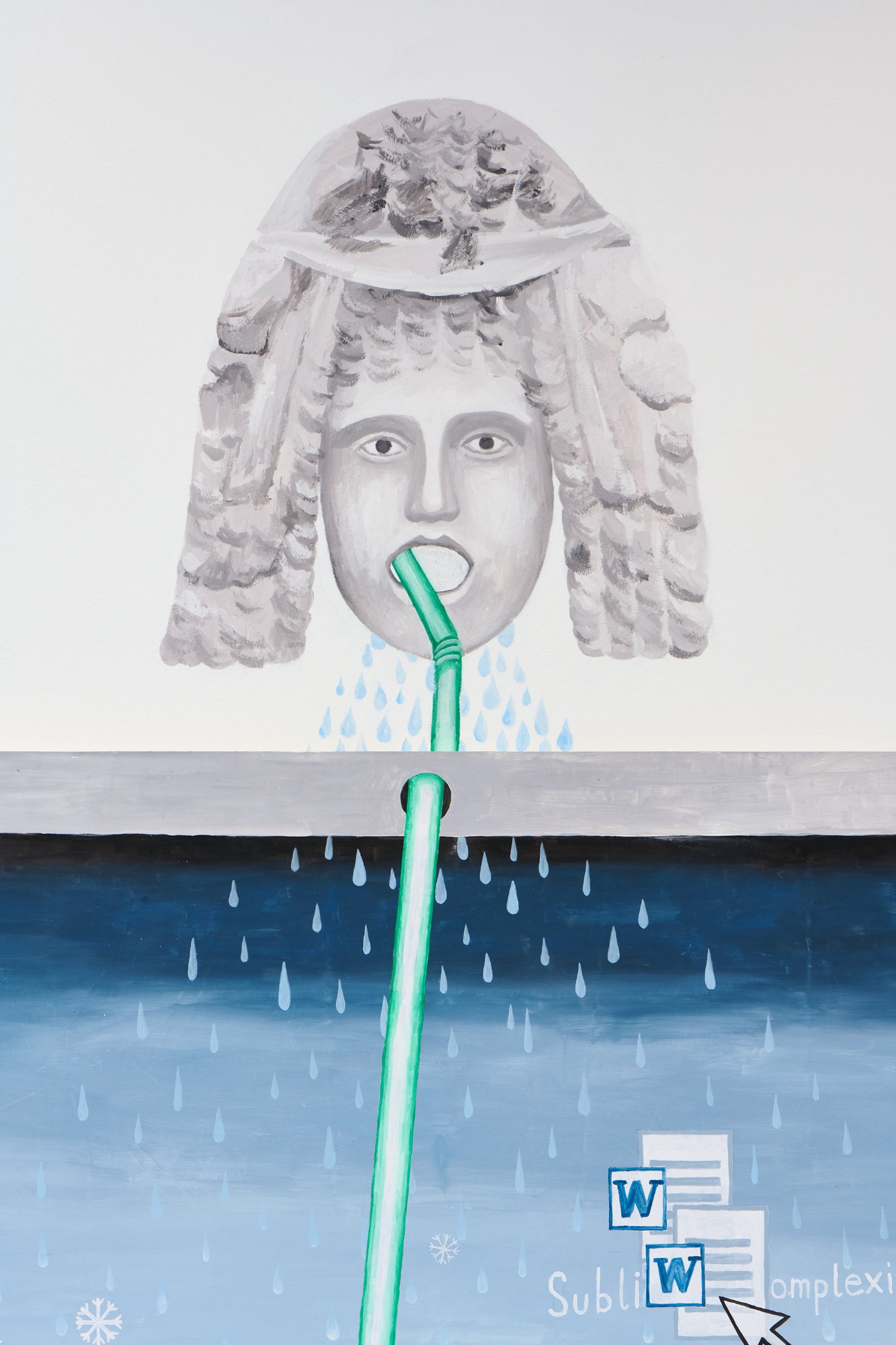
Agnes Scherer, Plan B(ernard) (detail), 2021, installation view Agnes Scherer – The Notebook Simulations, Kunstverein für die Rheinlande und Westfalen, Düsseldorf, 2021, photo: Mareike Tocha
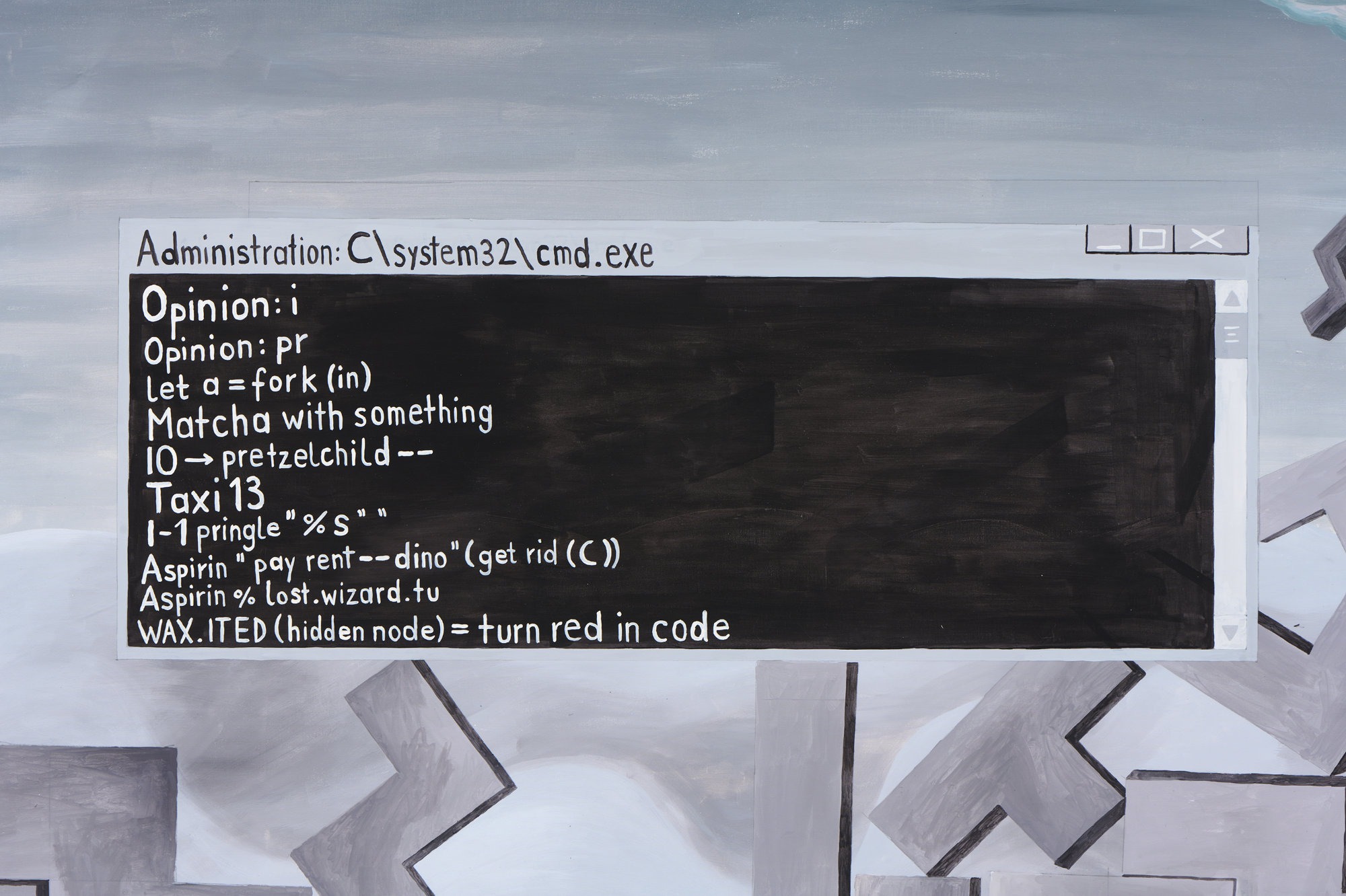
Agnes Scherer, Verhängnisvolle Geschenke (detail), 2021, installation view Agnes Scherer – The Notebook Simulations, Kunstverein für die Rheinlande und Westfalen, Düsseldorf, 2021, photo: Mareike Tocha
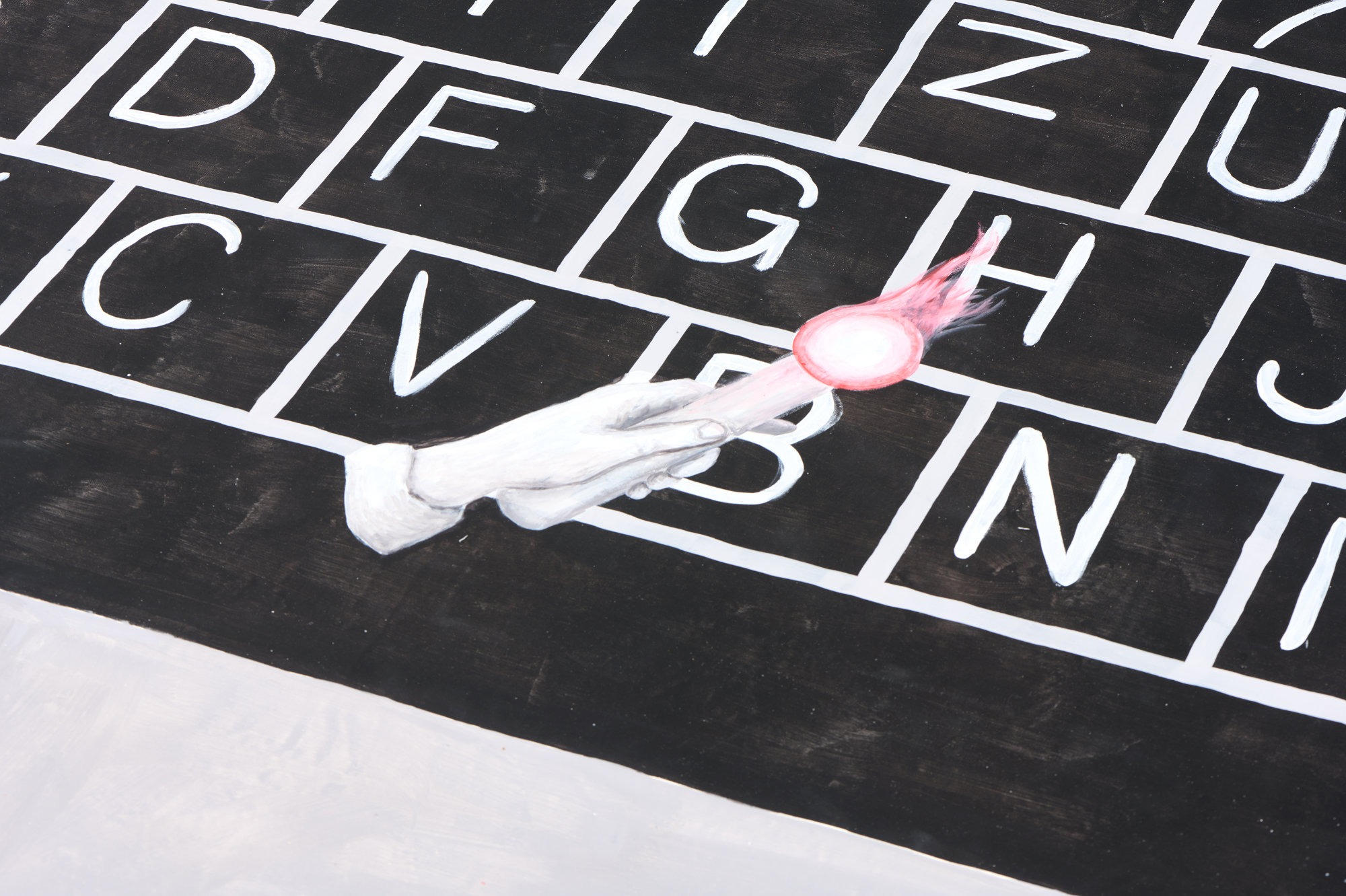
Agnes Scherer, Plan B(ernard), (detail), 2021, installation view Agnes Scherer – The Notebook Simulations, Kunstverein für die Rheinlande und Westfalen, Düsseldorf, 2021, photo: Mareike Tocha
The Kunstverein für die Rheinlande und Westfalen, Düsseldorf is pleased to present The Notebook Simulations, the first institutional solo exhibition by Agnes Scherer. Over the past few years, the artist, who studied in Düsseldorf but is now based in Berlin, has developed a unique style of working in the inter-zone between exhibition and stage play, uniting sculpture, painting, drawing, music and performance in multi-layered operettas and narrative installations. Taking her research into cultural and art history as a starting point, she deploys often disparate historical forms of presentation and points of reference superimposed on one another. Her artistic adaptations make use of consciously positioned anachronisms as alienation strategies in order to expose power relations and to bring current issues all the more clearly to the fore.
For her current exhibition at Kunstverein Düsseldorf, Agnes Scherer has produced an installation consisting of nine monumental, supersized “laptop simulations”, whose painted flat screens display mythical and puzzlingly mysterious scenarios alongside elements of “contemporary folklore”: With reference to the gouache collection of the Augsburg Book of Miracles [Augsburger Wunderzeichenbuch] from the 16th Century – in which natural phenomena are presented as portents or premonitions – Scherer too illustrates numerous wondrous occurrences and inexplicable cosmic phenomena in combination with error messages from the Windows operating system and endlessly multiplying programme windows. Her pictorial creations are commented on by texts and messages, which she has inscribed as pointers to her own authorship on the keyboards of the mobile computers – here, instead of regular keyboards, can be found, for example, sequences of letters and signs transformed into subjective codes, or also a self-portrait of the artist.
In their strict arrangement, which recalls megalithic stone formations and ancient temple sites, Scherer’s notebook simulations have the appearance of the archaic ruins of an era in the process of drifting away into the past. The opener for her installation is the work Der Perseidenschauer [The Perseid Meteor Shower]. It shows a natural phenomenon that Agnes Scherer allegedly once witnessed with a friend in a Scottish marshland. In addition to this annually occurring meteor shower, however, there was also, Scherer states, an inexplicable sphere of light, a will-o’-the-wisp, a ghost light. At first seemingly easy to locate, it repeatedly shifted its position, remaining finally out of reach. Just as the ghost light only pretends to have a precise position and sets in motion a never-ending game of catch, so the artist’s image and text motifs provide numerous levels of interpretation, which can, however, turn out to be deceptions. Baroque emblems, the window topos recurrent since the onset of the modern age, surreal illusions, and computer interfaces combine to form laptop diptychs overflowing onto the walls of the exhibition space. By stringing digressions together in will-o’-the-wisp-like fashion, Scherer makes the issue of intentionality a central object of interest – the intentionality both of the artist and that of the metaphysical arbiters who play their impenetrable games with earthly figures on the pictorial surface.
Agnes Scherer lives in Berlin and Salzburg. She studied painting at the Kunstakademie Düsseldorf with Prof. Peter Doig. Her first operetta, Cupid and the Animals, was awarded the Nigel Greenwood Art Prize in 2015 and performed in, among other places, the Museum Ludwig in Cologne (2017) and TRAMPS in New York (2018). For her narrative installation The Very Hungry, which was shown in Horse & Pony, Berlin, Agnes Scherer received the Berlin Art Prize 2019. In addition, her works have been on show internationally in group and solo exhibitions, for example, among others, in the Cabaret Voltaire, Zürich, in the 1646 project space, The Hague, (both in 2020), at Kinderhook & Caracas, Berlin and the Kunstverein für die Rheinlande und Westfalen, Düsseldorf (both 2019). In the present exhibition, she blatantly quotes her former professor’s painting Echo Lake in her self-portrayal (who emerges, shouting, from the car in Der Perseidenschauer), while the sepulchral ship from Sutton Hoo at the opposite end of the exhibition space looks suspiciously like Doig’s iconic canoe images. The Sutton Hoo ship, the final resting place of a king, thus proves to be a dubious act of homage, which is moreover carried through the painting only in the form of a rejected exhibition design.
Curator: Eva Birkenstock (Director)
Curatorial Assistance: Gesa Hüwe
For her current exhibition at Kunstverein Düsseldorf, Agnes Scherer has produced an installation consisting of nine monumental, supersized “laptop simulations”, whose painted flat screens display mythical and puzzlingly mysterious scenarios alongside elements of “contemporary folklore”: With reference to the gouache collection of the Augsburg Book of Miracles [Augsburger Wunderzeichenbuch] from the 16th Century – in which natural phenomena are presented as portents or premonitions – Scherer too illustrates numerous wondrous occurrences and inexplicable cosmic phenomena in combination with error messages from the Windows operating system and endlessly multiplying programme windows. Her pictorial creations are commented on by texts and messages, which she has inscribed as pointers to her own authorship on the keyboards of the mobile computers – here, instead of regular keyboards, can be found, for example, sequences of letters and signs transformed into subjective codes, or also a self-portrait of the artist.
In their strict arrangement, which recalls megalithic stone formations and ancient temple sites, Scherer’s notebook simulations have the appearance of the archaic ruins of an era in the process of drifting away into the past. The opener for her installation is the work Der Perseidenschauer [The Perseid Meteor Shower]. It shows a natural phenomenon that Agnes Scherer allegedly once witnessed with a friend in a Scottish marshland. In addition to this annually occurring meteor shower, however, there was also, Scherer states, an inexplicable sphere of light, a will-o’-the-wisp, a ghost light. At first seemingly easy to locate, it repeatedly shifted its position, remaining finally out of reach. Just as the ghost light only pretends to have a precise position and sets in motion a never-ending game of catch, so the artist’s image and text motifs provide numerous levels of interpretation, which can, however, turn out to be deceptions. Baroque emblems, the window topos recurrent since the onset of the modern age, surreal illusions, and computer interfaces combine to form laptop diptychs overflowing onto the walls of the exhibition space. By stringing digressions together in will-o’-the-wisp-like fashion, Scherer makes the issue of intentionality a central object of interest – the intentionality both of the artist and that of the metaphysical arbiters who play their impenetrable games with earthly figures on the pictorial surface.
Agnes Scherer lives in Berlin and Salzburg. She studied painting at the Kunstakademie Düsseldorf with Prof. Peter Doig. Her first operetta, Cupid and the Animals, was awarded the Nigel Greenwood Art Prize in 2015 and performed in, among other places, the Museum Ludwig in Cologne (2017) and TRAMPS in New York (2018). For her narrative installation The Very Hungry, which was shown in Horse & Pony, Berlin, Agnes Scherer received the Berlin Art Prize 2019. In addition, her works have been on show internationally in group and solo exhibitions, for example, among others, in the Cabaret Voltaire, Zürich, in the 1646 project space, The Hague, (both in 2020), at Kinderhook & Caracas, Berlin and the Kunstverein für die Rheinlande und Westfalen, Düsseldorf (both 2019). In the present exhibition, she blatantly quotes her former professor’s painting Echo Lake in her self-portrayal (who emerges, shouting, from the car in Der Perseidenschauer), while the sepulchral ship from Sutton Hoo at the opposite end of the exhibition space looks suspiciously like Doig’s iconic canoe images. The Sutton Hoo ship, the final resting place of a king, thus proves to be a dubious act of homage, which is moreover carried through the painting only in the form of a rejected exhibition design.
Curator: Eva Birkenstock (Director)
Curatorial Assistance: Gesa Hüwe
